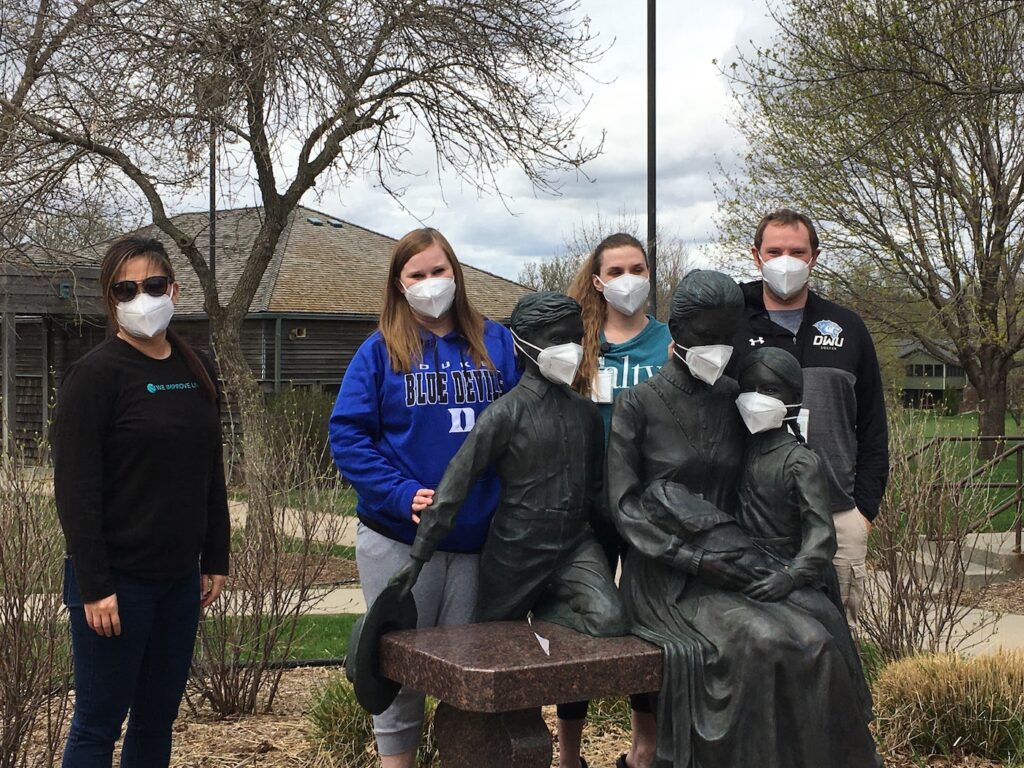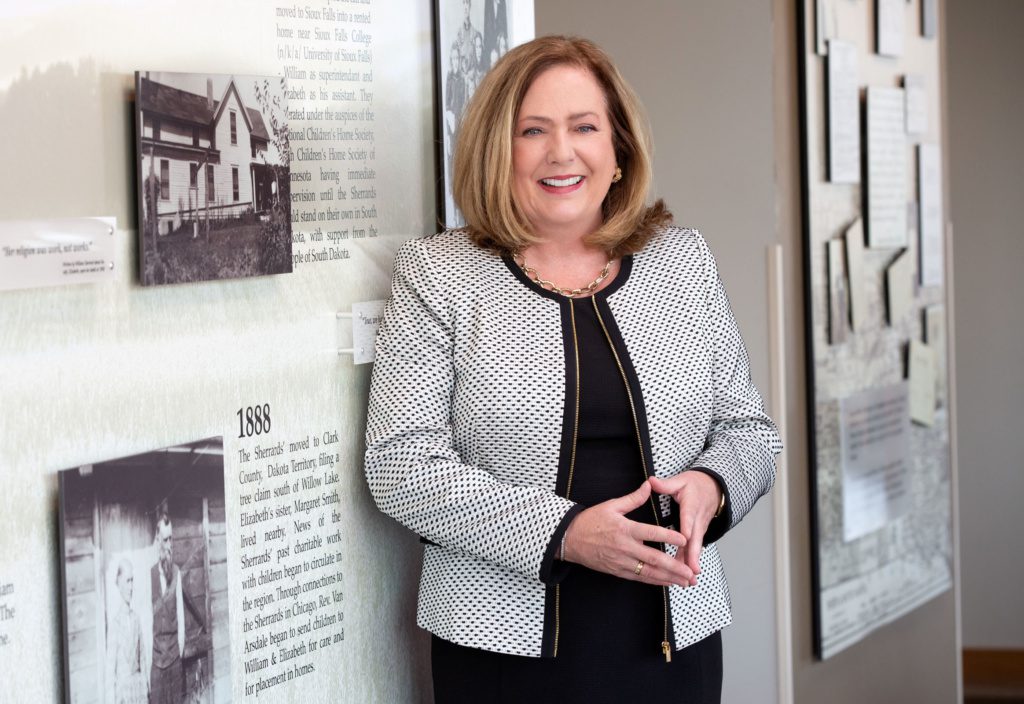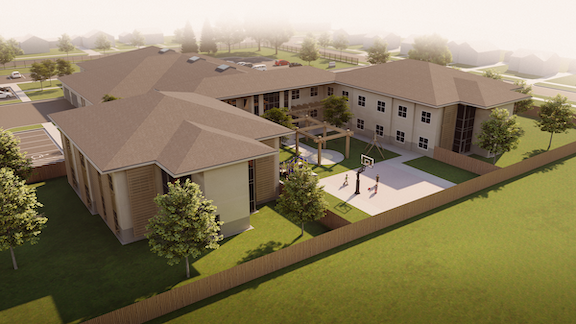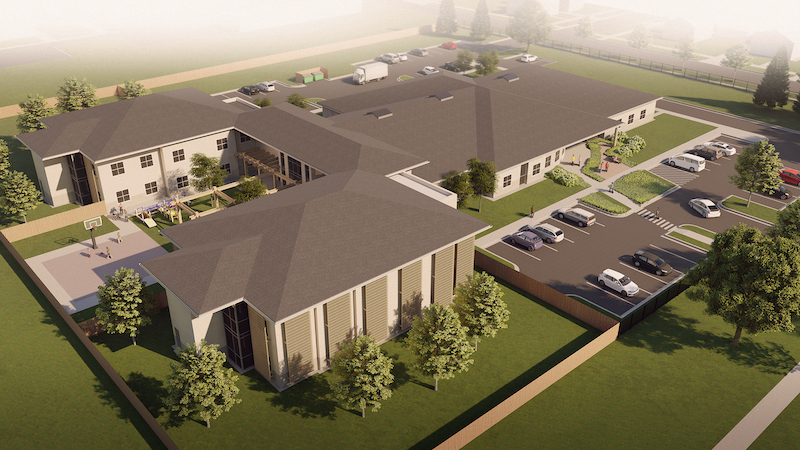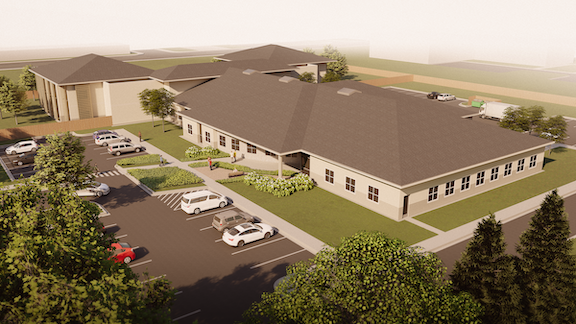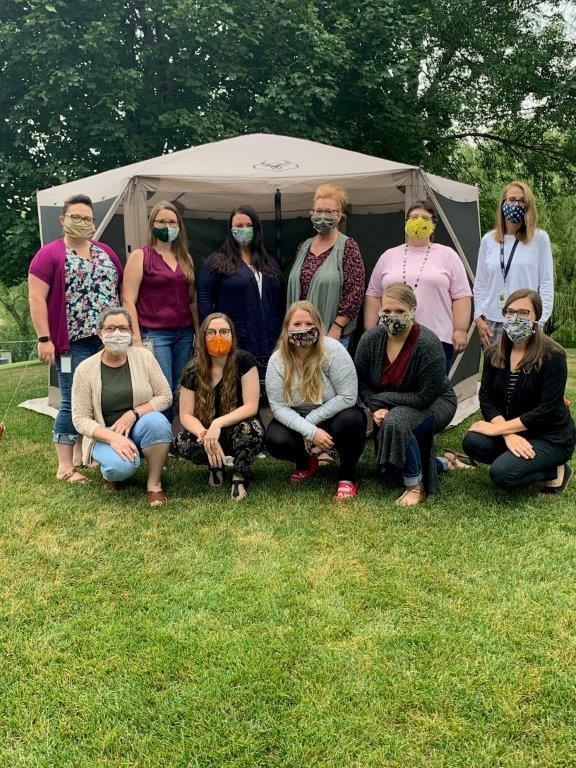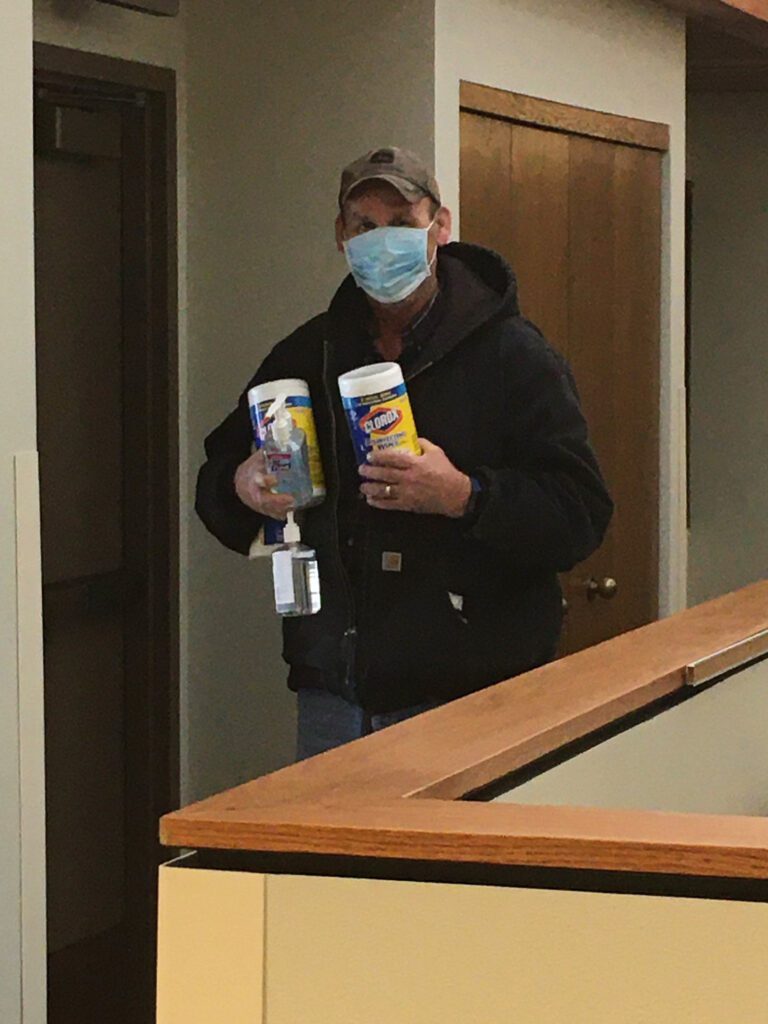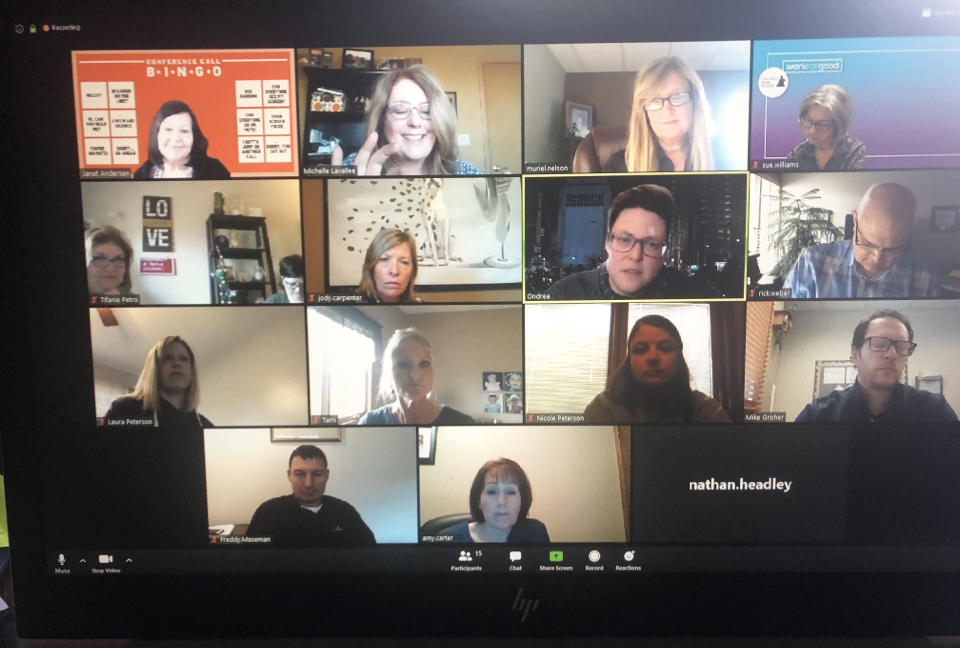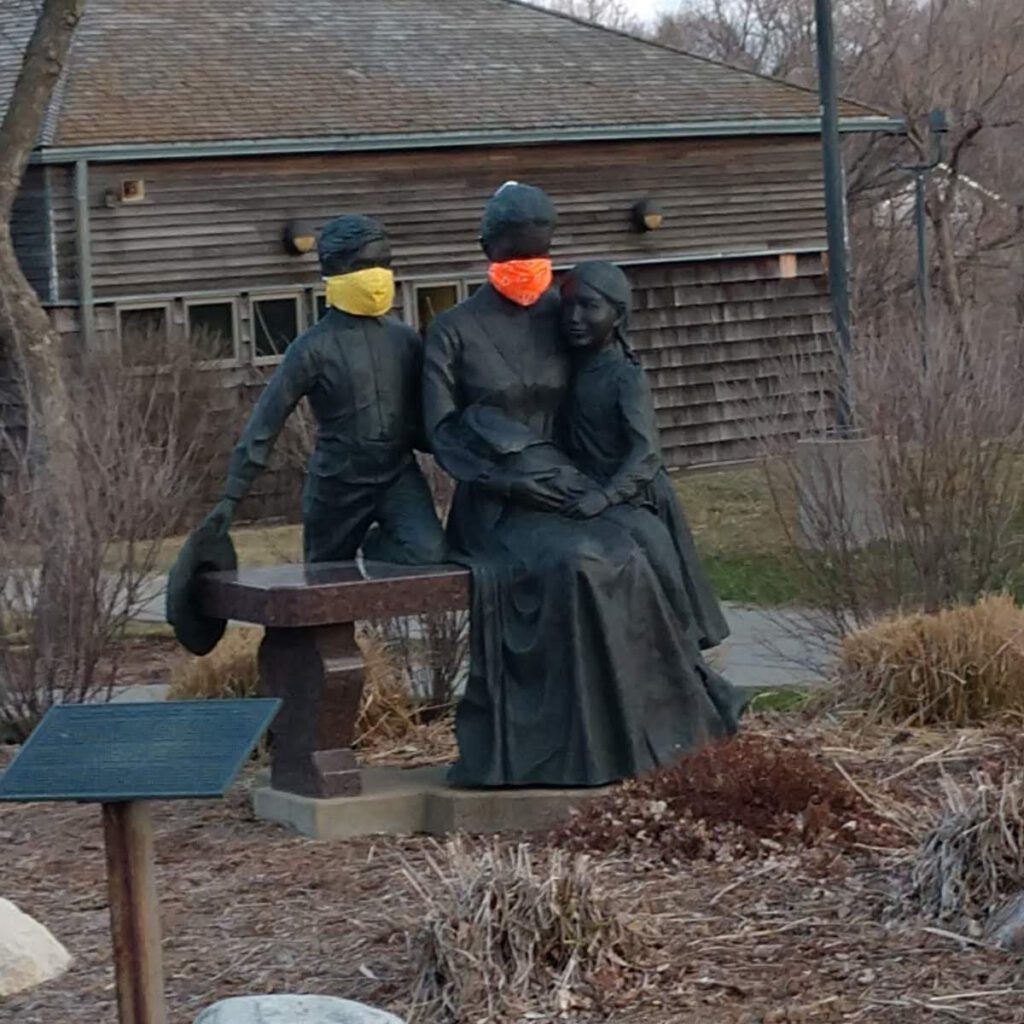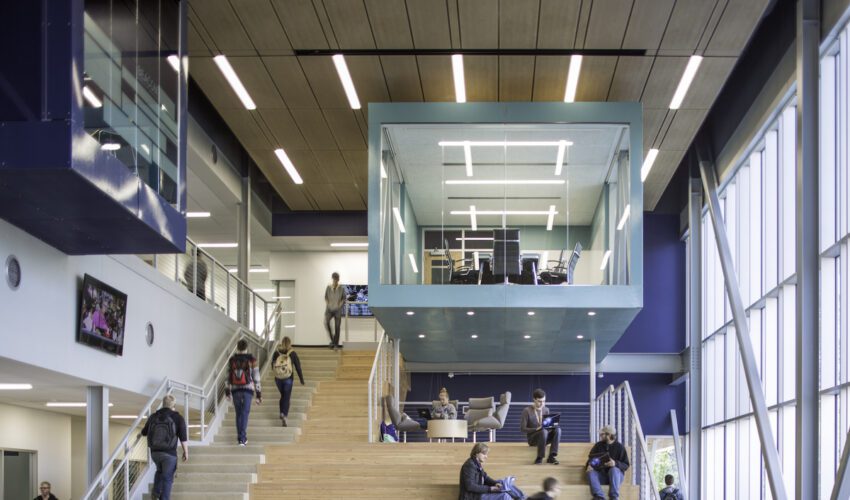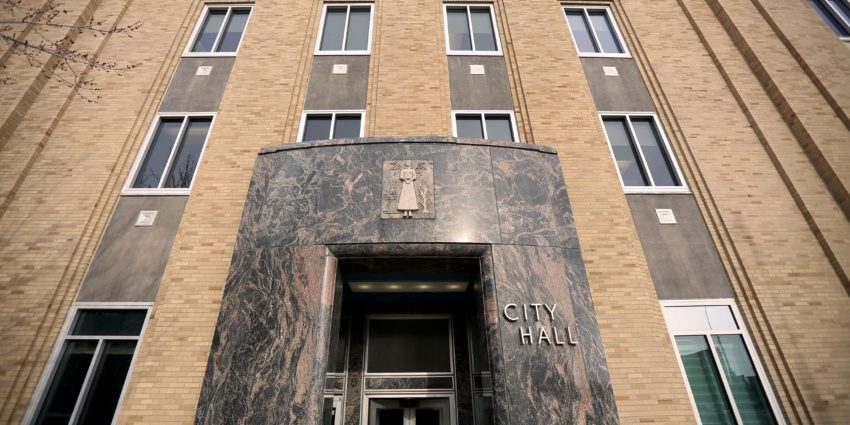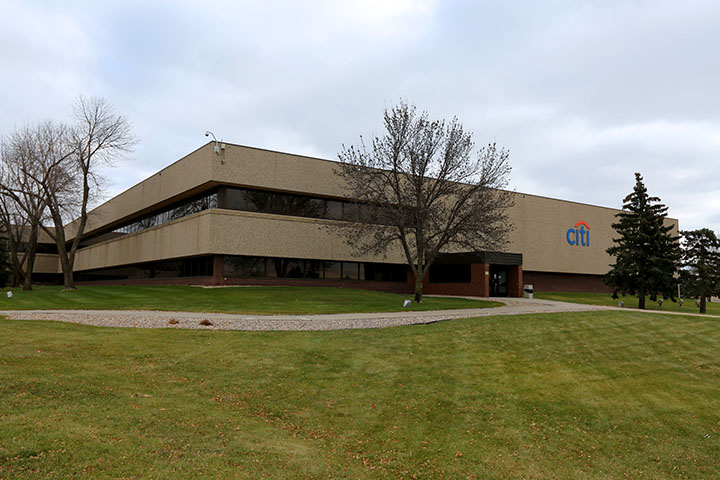With new building, staffing approach, Children’s Home Society is realizing return on investment
May 3, 2021
A year ago, there were approximately 30 positions waiting to be filled throughout Children’s Home Society.
Today, there are six.
“Do you know how happy I am about that? I am so grateful,” said Michelle Lavallee, who became CEO in late 2019.
“People stopped quitting.”
That didn’t just happen spontaneously.
It’s the result of considerable investment, both in employee compensation and benefits, but also in the employee experience, Lavallee said.
“I realized I had lost 123 people after I’d only been there a year. How is that sustainable?” she said. “That’s horrifying, but that had been the pattern.”
This is the new pattern: Employee engagement is trending up as turnover is going down. Wages are up considerably, and employees’ student loans are being paid down thanks to a new benefit.
“There is so much more stability,” Lavallee said. “People back each other up because now they all have experience. Before, we were constantly in training mode.”
This week, the organization breaks ground on another key milestone: a new, expanded Children’s Inn to serve those faced with domestic abuse and neglect.
Renderings by Koch Hazard Architects
“When I first came, there were two things I was told were priorities: Get Children’s Inn going and recruitment and retention under control, and both those things are happening,” Lavallee said.
Expanded Children’s Inn
The Children’s Inn, which primarily serves women and children who are victims of domestic abuse and neglect from 409 N. Western Ave., is a program of the Children’s Home Society.
The new building, designed by the late architect Jeff Hazard, will more than double bed capacity, bringing it to 96, and allowing the center also to offer male victims on-site stays.
It will be located on the Empower campus at 2001 E. Eighth St. and is scheduled to be done by the end of 2022.
The most recent year has brought quieter times to Children’s Inn, which isn’t necessarily a good thing.
“We know from the police chief that domestic violence is up during COVID, but our stays were down,” Lavallee said. “For 283 days a year, we were over capacity for the last six years. Not during COVID. We haven’t been at occupancy. The victims are at home with their abusers.”
As the pandemic subsides, she anticipates a potential surge in need. Compounding that challenge: Children’s Inn is an organization without a dedicated payer source.
“There’s no payer source for domestic violence. Who pays for domestic violence? Nobody,” Lavallee said. “We have eight beds dedicated to abuse and neglect and emergency care as our state contract, for children only.”
The rest has to come through fundraising, which makes tackling a major building project even harder.
The building is possible because of a $16 million gift from philanthropist Denny Sanford, which will support both construction and operations. It leaves Children’s Home with a $12 million gap to fill through fundraising.
“His willingness to push us forward like that was a big deal,” Lavallee said. “We know we can raise $12 million. Raising $30 million we wouldn’t have been able to do, and Children’s Home Society has never gone forward with a project without the money in the bank. So this allowed us to do that, and it will be funded in perpetuity.”
Future focus
Sanford’s investment in the organization goes beyond the most recent building. It’s part of a $55 million gift announced in early 2018 that also helped create an endowment to support staff recruitment and retention.
Front-line residential treatment counselors have gone from a starting wage of less than $15 per hour to $17 per hour.
“What a game changer,” Lavallee said. “The only reason we can do it is because of Denny Sanford’s donation. We were able to give on average a 20 percent wage increase. In some cases, it was $4 per hour.”
The organization also began offering to help pay off qualifying employees’ student debt. There are 90 people currently receiving $150 per month toward their student loans.
“They talk all the time about how helpful it is,” Lavallee said. “We just hired someone with $80,000 in student debt, and she’s so excited we’re going to pay part of that.”
The results are showing in the data, with employee surveys saying staff are more likely to recommend working at Children’s Home Society today than two years ago. Turnover in the first quarter of this year was 3.9 percent, compared with 9.3 percent a year ago.
For residential treatment counselors, among the hardest positions to recruit and retain, turnover was 13 percent in the first quarter compared with 18 percent a year ago.
And it hasn’t been an easy year for those employees.
The pandemic brought a big change in how their services had to be delivered.
“Every day we were faced with new decisions. The scariest one was: What if the residential treatment counselors get COVID? What would we have done with the kids? And if I have a COVID outbreak, what do I do with the kids? Nobody knew,” Lavallee said.
Fortunately, cases largely were contained within the organization.
“We had no spread,” Lavallee said. “They were so disciplined. We just stopped doing temperature taking. We’re all still masking unless we’re all vaccinated. But we’re really looking forward to the day we can all stop masking so the kids can see our faces.”
Kids who already were dealing with significant challenges also had to adjust to not being able to do home visits or have meals with anyone other than their unit.
“That was the hardest thing. Our kids could not leave,” Lavallee said. “They couldn’t go on home visits, and that’s an important part of therapy. But we adapted. We adapted to Zoom; turns out, you can do family therapy with Zoom. In the spring, we put up tents so the parents could come back, and parents and therapists could be in little pods 6 feet apart.”
The day school closed when the Sioux Falls School District did, which impacted 26 kids, and it affected referrals to residential care.
“Usually kids’ behaviors come to attention by the school,” Lavallee said. “Half our kids come because they have ADD or emotional health problems, and the other half are removed from families by DSS, and it’s increasingly family referrals.”
The average stay went from 14 to 18 months up to 22 months.
“It was just hard,” Lavallee said. “Kids weren’t ready to go home because the intensity of the therapy slowed down.”
Behind the scenes, the 330-person team was receiving more intentional staff support. Children’s Home University is entering its second year of providing comprehensive leadership development.
“Nobody had leadership training. If they were a good residential treatment counselor, they might become a supervisor, but they never had training,” Lavallee said.
“Now, there is very intense leadership training: how to give feedback, give a review, know thyself so you can know others. This is total transformation, and I have a board that is supportive of it, but the culture needed attention.”
She’s now looking toward a five-year plan with a focus on offering more evidence-based support for the services the organization provides.
“It’s so much fun to say: What does this look like in the next five years,” she said. “I’ve got big plans.

